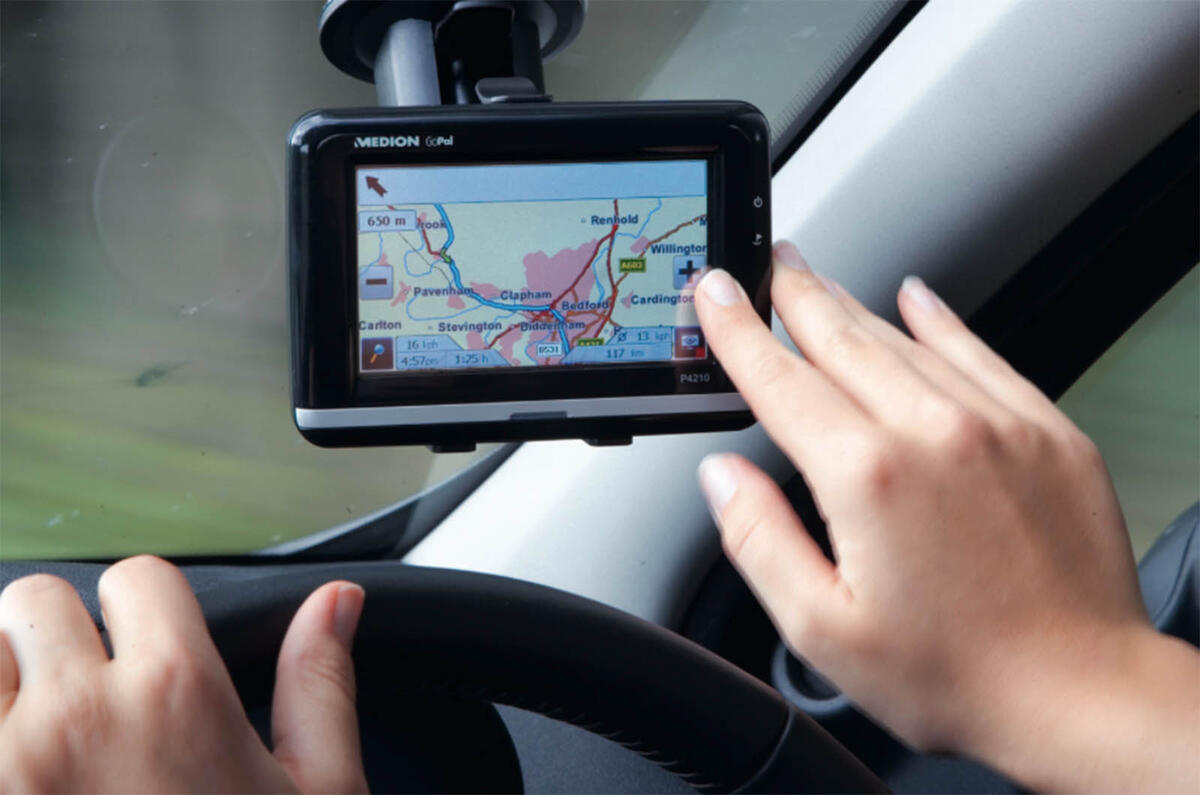Earlier this month, a police force posted a picture online of an aftermarket sat-nav on a car’s dashboard.
It nestled discreetly in the bottom right corner of the windscreen, alongside a police instruction that placing it anywhere else was ‘illegal’.
I forget which police force it was because the tweet has since been deleted. It wasn’t true, you see. The Highway Code and the laws that back it up give no particular location for placing sat-navs, beyond advising that ‘windscreens and windows MUST be kept clean and free from obstructions’, and that ‘glass or other transparent material shall be maintained... [so as to] not obscure the vision of the driver’.
Follow the very letter of the law, then, and you can no more place a sat-nav in the bottom right corner of your windscreen than you can anywhere else.
Although, in reality, obviously you can because if it’s out of the swept area of your wipers, or it obscures only your view of your own bonnet, nobody should really care.
Shouldn’t care, then, but if they think it’s illegal to put it anywhere but the bottom right corner, perhaps they might. Who knows? The daft thing is that if your sat-nav system pops out of the top of the dashboard and gets in the way of the windscreen as standard equipment, that’s just dandy. But your own system, even if it obscures less, may not be. Isn’t this all a bit... fuzzy?
Uber vs London cab vs sat-nav: which is best?
Things are similar when it comes to using a mobile device. Say you’ve installed and programmed a navigation system on your smartphone. I do this because Land Rover’s infotainment system is pants but the Waze app on my phone is excellent. So I strap the phone into a holder attached to a central air vent, which leaves the phone directly next to the car’s own touchscreen. Partly in front of it, in fact.
I could tap away at the Land Rover’s official screen with impunity, so long as I didn’t appear too distracted. Yet ‘it is illegal to use your phone while driving unless you have hands-free access’, according to the Highway Code. And even though it suggests a dashboard holder is an answer, it’s still not totally hands-free, is it? I think the spirit of the law means that, say, if your phone’s ringing, you can touch the screen once to answer it. Motoring organisations think you “should be okay” if, similarly, you’re just acknowledging a one-off navigation instruction. But perhaps you wouldn’t be, depending on an officer’s mood or inclination. And this ‘perhaps’ doesn’t sit that comfortably with me when it comes to legalities.
There’s more. As you might know, road laws can apply even when you’re not on the road, if you’re in an area to which the public have access. In most car parks, for example, road laws apply. But what about the bit of the car park where you’re paying for your drive-through, but they let you pay by phone? Technically, you could be in trouble; practically, you shouldn’t be, but in a world where officers are insufficiently trained to know where you can put a sat-nav, who knows?







Join the debate
Add your comment
.
I'm still not sure if I'm allowed to touch the screen of my satnav while driving. It's not built in but stuck to the screen and has voice control, but occasionally it needs manual input because it cannot understand my broad home counties accent.
Why the need to update the law at all?
If you're driving and cause a crash because you're on your phone, using sat nav, vaping or whatever the reason may be that you're not paying attention, surely that fits into "Driving without due care and attention". Why the need to complicate things?
symanski's phone
once upon a time - by which i mean last thursday - i had my key in the ignition, not looking where i was going (using the touchscreen radio), seatbelt off, eating a sandwich. handbrake on, in gear, engine off. how is that ok but using a phone would be 6 points? 3rd paragraph of this article; by the exact wording, the rear view mirror is also illegal then? there's a difference between a couple of seconds pressing green to answer a (hands free) call when you can see there's nothing hazardous nearby and the people who you still see driving around holding it to their ears and are clearly really distracted by it. i've seen truck drivers reading paperwork. cars with climate control done by touchsceen are as bad as a phone - your hand bounces around and you have to concentrate on it!
LOOK!......no Buttons.....!
By logic, nearly everything is an Arm stretch away which means you have to look to see who it is, decide whether to answer it, and if you do all this short space of inattention depending on how fast your going can be a fair old distance, time enough to have a bad accident, that’s why the Law around Mobiles is so sketchy, why not make Hans free button free?, by which I mean voice operated, this way you can still Drive, I mean after all, we have conversations if we have a passenger we can still drive safely, so maybe a Button free way of using a Mobile might be better...?
@ russ13b
"people who you still see driving around holding it to their ears and are clearly really distracted by it. i've seen truck drivers reading paperwork"
I was doing neither! I was actually looking for somewhere to stop.
I've actuallly see a police woman driving whilst texting. Very much double standards being applied.